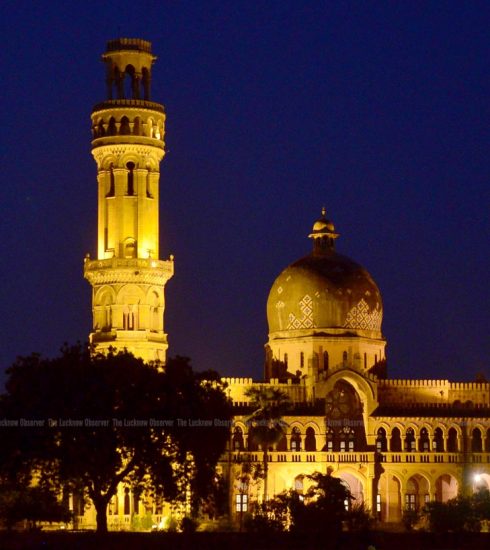A Call from Allah
Glorious journey of a Muslim pilgrim to Hajj
“Labbaik Allahumma Labbaik”
(Here I am at Thy service, O Allah, Here I am)
The chant of above line becomes an anthem of a sacred journey when a Muslim devotee leaves home in the ways of submission for Allah with millions of praises for the Lord and a heart filled with faith to perform the ritual of Hajj and fulfil a life-long desire of Hajj Bait’ullah (The journey to the House of Allah).
Hajj is one of the Five Pillars of Islam, The others are Tauheed, the profession of Allah as the only God and Mohammed as his Prophet; Saum (Roza) fasting during the month of Ramzan; Zakaat (charitable giving) and Namaaz, the five-time ritual prayer, prescribed as mandatory by which every practicing Muslim must abide. This year the Hajj falls on Oct 03. It takes place annually between the 8th and 12th days of Dhu-al-Hijjah, the final month of the lunar Islamic calendar, a time when Allah’s spirit is believed to be closest to earth.
The Hajj consists of a five-day excursion, required by all physically and financially able Muslims, to Makkah and the nearby holy sites of Arafaat, Mina, and Muzdalifah. Once there, pilgrims perform a series of rituals to unify themselves with other believers, absolve themselves of their sins and pay tribute to Allah.
The origin of the Hajj dates back to 2,000 BC. The tradition says Isma’il, the infant son of the Prophet Ibrahim was stranded in the desert along with mother Hajra and there were no signs of water. With Isma’il close to death from thirst, Hajra ran back and forth between the hills of Safa’a and Marwa looking for water, the tradition recalls that constant scrubbing of the ground with the infants’ feet resulted in creation of a fresh water spring, known as the ‘Well of Zamzam’.
Following the orders of Allah, Ibrahim is said to have built a monument at the site of Ka’aba that has always been a centre of worship from the days of Adam and subsequent messengers reminded their people of the significance of the place. Worshipers from across the globe travel to Makkah to mark the rituals of Hajj. The ultimate rite of passage during the Hajj is circling the Ka’aba, an immense black cube, spiritually considered by Muslims to be the center of the world, and literally located in the centre of the Masjid al-Haram or the Grand Mosque in Makkah. During the Hajj, vast swells of worshippers seeking forgiveness circle the Ka’aba counter- clockwise, seven times.
Completion of all of the mandated rituals is believed to purify the souls and a place in heaven as well as the title of Haji (one who has performed the Hajj) — coveted and admired in Muslim communities around the world.
In the year 630 AD, Prophet Mohammed led a group of Muslims there in the first official Hajj, destroying the idols placed there by polytheistic worshipers and re-dedicating the site in the name of Allah. The path that Prophet Mohammed and his followers travelled is retraced as part of the Hajj rituals, which also include making Hajra’s walk and run between Safa and Marwa, stoning the wall of Satan that tempted Ibrahim to defy Allah, slaughtering an animal (as prescribed with the conditions of ‘Zabeeha’ or valid sacrificial animals) in honour of the sacrifice that Ibrahim made to save his son and climbing the Mount of Arafat from which Prophet Mohammad made his last sermon.
Since Hajj is an event that attracts people from across the globe having different climatic conditions, different food-styles, different cultures, concerns over various medicinal situations have cast a shadow over the years. This year the challenge is Ebola because of which certain nationalities have been barred to travel in the larger interest of the pilgrims.
Lucknow is one the few embarkations in India that have the privilege of providing direct flight services to Hajj pilgrims under the aegis of UPSHC (Uttar Pradesh State Haj Committee) that is being chaired by Mr. Mohammad Azam Khan, a Senior Cabinet Minister, Government of Uttar Pradesh and a popular Muslim face of the ruling Government. The city is blessed to have a structure by the name of ‘Haj House’ that is entirely maintained by the Government and that caters to all the pre-flight proceedings of a Hajj pilgrim who are primarily first- timers and come from various walks of life, most of whom are from rural background. The ‘Haj House’ is a neat piece of architecture that has been built considering all the necessary elements and bears an ambience of a pilgrim-hub and it’s accessibility to the Airport makes it all the more convenient and friendly. All the proceedings and documentation etc. during the Hajj season are conducted from this place.
It is always heartening to see all the Government machinery working with great dedication and enthusiasm to ease the nervousness of a pilgrim and it gets further motivating when one realises that all those helping hands are not confined to a community, and people just get into one uniform thought to assist a Hajj pilgrim and wish their Lord to return a reward for this noble cause. May Allah accept the prayers of a Haji and may He reward all those who do their bit, Aameen!
Shaheer A. Mirza








